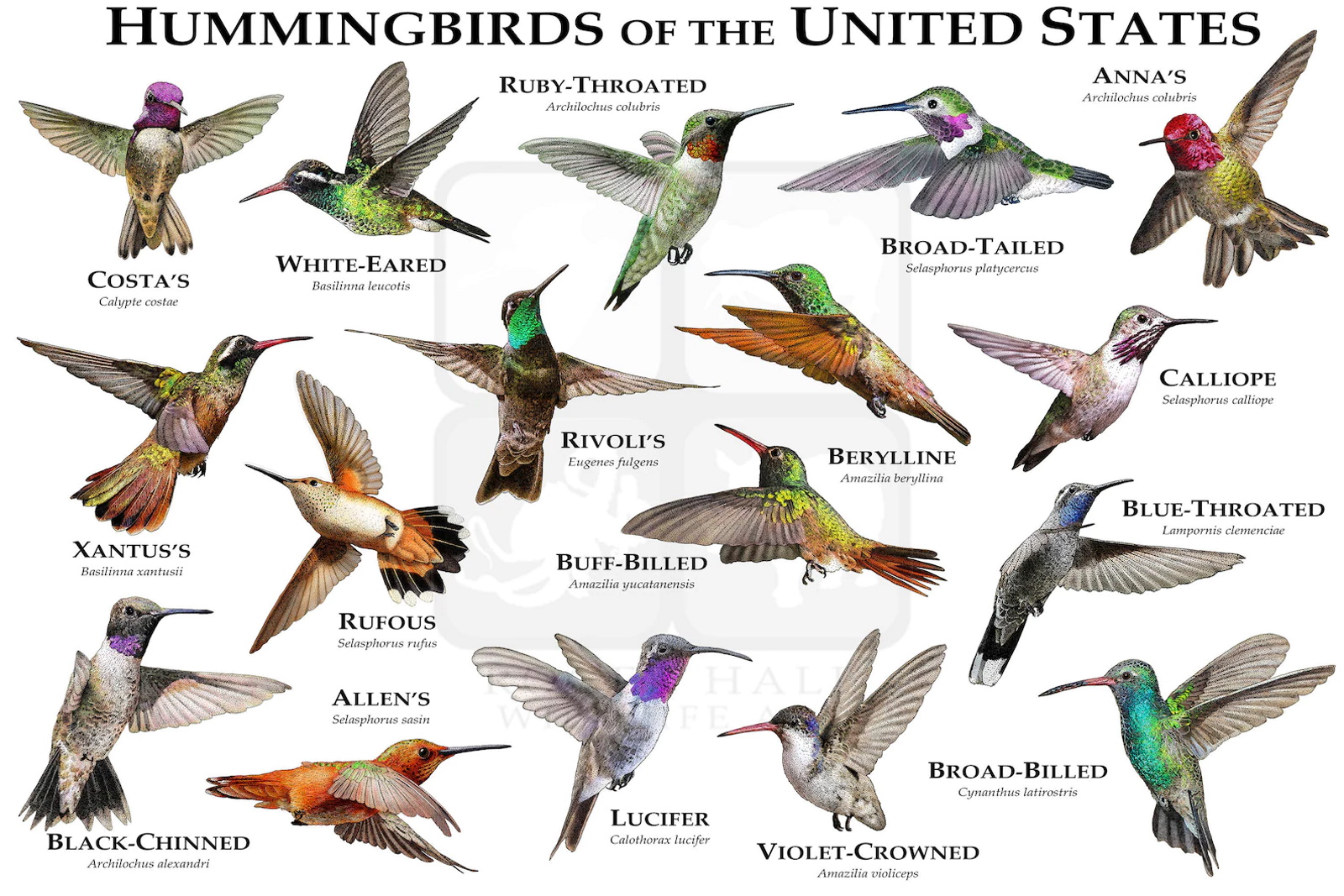By far the main hummingbird in my area is the female black chinned Hummingbird. They are territorial and try to keep others away from my two feeders even though I spaced them 50 - 75 feet from each other.
One observation I have not found mentioned elsewhere is a color change in the plumage.
When the light hits the females just right, the white breast glows yellow, and the green back turns gold.
 www.hummingbirdsplus.org/species/black-chinned/#:~:text=The%20Black-chinned%20Hummingbird%20is%20a%20small%20green-backed%20hummingbird
www.hummingbirdsplus.org/species/black-chinned/#:~:text=The%20Black-chinned%20Hummingbird%20is%20a%20small%20green-backed%20hummingbird,considered%20the%20western%20counterpart%20of%20the%20Ruby-throated%20Hummingbird.
Black Chinned Hummingbird Species
The Black-chinned Hummingbird is a small green-backed hummingbird that is common in the western side of America. In a broad daylight, the remarkable thin strip of iridescent purple that borders its black chin becomes highly noticeable. It is considered the western counterpart of the Ruby-throated Hummingbird.
 Appearance
AppearanceThe Black-chinned Hummingbird has a length of about 3.25-3.5 in and a weight of 0.1 to 0.2 ounces. Their small size makes them an easy prey to insect-eating birds and animals. And just like the majority of hummingbirds, females are larger compared to their male counterparts. Also, juveniles average larger compared to their parents.
The bird has metallic green upper body and a white lower body that with green flanks. It has a long, straight, and very slender bill.
The face and chin of an
adult male is colored black. Its throat band appears to be glossy purple, and its tail is dark forked.
On the other hand, the
female Black-chinned Hummingbird has a dark rounded tail with white tips. And just like the female ruby-throated hummingbirds, the female Black-chinned also does not have any throat patch.
The plumage of a
juvenile Black-chinned Hummingbird closely resembles that of the adult female, except that it has buff margins on the dorsal feathers. Some juvenile males may have some purple feathers on their throats.
Distribution and Habitat
The largest population of Black-chinned hummingbirds is found in the western side of the United States, as well as portions of southern British Columbia and Northern Mexico. They are so common in this region, that it is found that in some areas in southern Arizona and southern New Mexico rivers, you can find their nests every 100 meters or so.As very adaptable hummingbirds, their habitats are wide ranging, including mountains, woodlands, orchards, meadows, and chaparral habitats. During breeding season, they live in open, semiarid areas that are near to water bodies. And during migration, they would rarely remain longer than one day at a feeder, despite threats of food scarcity.
Their habitat preference represents their being generalist – as long as there are tall trees and flowering shrubs and vines in the area, they can survive.
Food
Black-chinned hummingbirds feed on nectar from flowers with the help of their long extendable tongue. The other benefit of hummingbirds collecting nectar is on plant pollination. Aside from nectar, they also feed on insects. They catch flying insects or get those insects stuck in spider webs.
After eating, Black-chinned Hummingbirds may perch on high, bare branches of trees for a couple of minutes. They love surveying their territories.
Behavior and Ecology
The males and females of Black-chinned hummingbirds use varying habitats from one another for breeding territories. They generally show territoriality around feeders and other small feeding sites. As the breeding season goes on, they become more defensive in protecting these territories. However, the overwhelming animal population, as well as multiple food sources in a certain area, weakens this territorial behavior.
Black-chinned hummingbirds produce a calling sound that is described as ‘acoustically complex’, with notes following non-random patterns and are more complicated than their songs.
They also exhibit the diving displays that are well known among hummingbirds. They use this behavior not just in defending their territories but also in courtship. During the plunge, they produce a unique sound as the wind swiftly goes through their feathers.
The female builds the nest for her young. She would find a safe location in a shrub or tree. Specifically, Black-chinned hummingbirds love to nest between 6-12 feet above the ground. Female hummingbirds construct the nest with the use of plant finer, spider webs, and lichens. This newly built nest is shaped like a compact, deep cup. However, as the young birds grow, the nest also stretches into a wider and shallower cup.Some studies claim that black-chinned hummingbirds intentionally nest near the active nests of much larger, predatory birds, since large predators are generally uninterested with hummingbirds, and because their presence will deter other birds that might target the black-chinned hummingbirds’ eggs or newly hatched chicks.
The Black-chinned Hummingbird lays 2 small white eggs at a time. These coffee bean-sized eggs will be incubated for a span of 12-16 days.
One fun fact that you should know is that the oldest known Black-chinned Hummingbird has a lifespan of 10 years and 1 month.Conservation
The Black-chinned Hummingbird has a ‘Least Concern’ status under the International Union for the Conservation of Nature. This is mainly attributed to the hummingbird’s large range, large population size, and increasing population trend of about 14.6 percent per decade. The rising popularity of hummingbird feeders and gardens is a significant driver to the stable population of the species.
www.allaboutbirds.org/guide/Black-chinned_Hummingbird/id